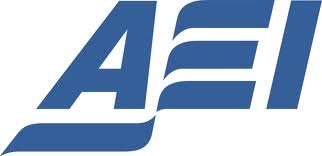 American Enterprise Institute recently published a paper on comparison between for profit education and non-profit education.
In the past year, for-profit higher education providers have
been thrust into the spotlight. The fastest growing postsecondary
sector has come under unprecedented scrutiny
from policymakers, regulators, and the media. Critics
have zeroed in on a range of concerns, from perceived
dubious recruiting tactics and overblown promises about
students’ future employability to excessive student debt
and problematic default rates. For their part, for-profits
have deployed a formidable lobbying apparatus to argue
that their efforts are being unfairly maligned with applesto-
oranges comparisons that do not do justice to the
important education access they provide to previously
underserved students.
Largely missing from the debate, however, has been a
more detailed look at how traditional and for-profit institutions
differ in important areas like administration,
instructor experience, mission and governance, data collection
and use, and student recruitment and retention.
This paper is an effort to get beyond sensationalized headlines
and examine these questions from the point of view
of individuals who have moved from the traditional to the
for-profit sector—or kept a foot in both. These insiders
highlighted a variety of characteristics they say distinguish
the for-profits where they work from the nonprofit institutions
with which they are also familiar.
Trial, Error, and Measurement. Perhaps the biggest appeal
of for-profits for those who have joined the sector is that
they are relatively new postsecondary institutions—works
in progress in which experimentation is encouraged and
inevitable.
Rethinking the Faculty’s Role.
Practical Instruction and Student Support.
Click Here to read the complete paper]]>
American Enterprise Institute recently published a paper on comparison between for profit education and non-profit education.
In the past year, for-profit higher education providers have
been thrust into the spotlight. The fastest growing postsecondary
sector has come under unprecedented scrutiny
from policymakers, regulators, and the media. Critics
have zeroed in on a range of concerns, from perceived
dubious recruiting tactics and overblown promises about
students’ future employability to excessive student debt
and problematic default rates. For their part, for-profits
have deployed a formidable lobbying apparatus to argue
that their efforts are being unfairly maligned with applesto-
oranges comparisons that do not do justice to the
important education access they provide to previously
underserved students.
Largely missing from the debate, however, has been a
more detailed look at how traditional and for-profit institutions
differ in important areas like administration,
instructor experience, mission and governance, data collection
and use, and student recruitment and retention.
This paper is an effort to get beyond sensationalized headlines
and examine these questions from the point of view
of individuals who have moved from the traditional to the
for-profit sector—or kept a foot in both. These insiders
highlighted a variety of characteristics they say distinguish
the for-profits where they work from the nonprofit institutions
with which they are also familiar.
Trial, Error, and Measurement. Perhaps the biggest appeal
of for-profits for those who have joined the sector is that
they are relatively new postsecondary institutions—works
in progress in which experimentation is encouraged and
inevitable.
Rethinking the Faculty’s Role.
Practical Instruction and Student Support.
Click Here to read the complete paper]]>

